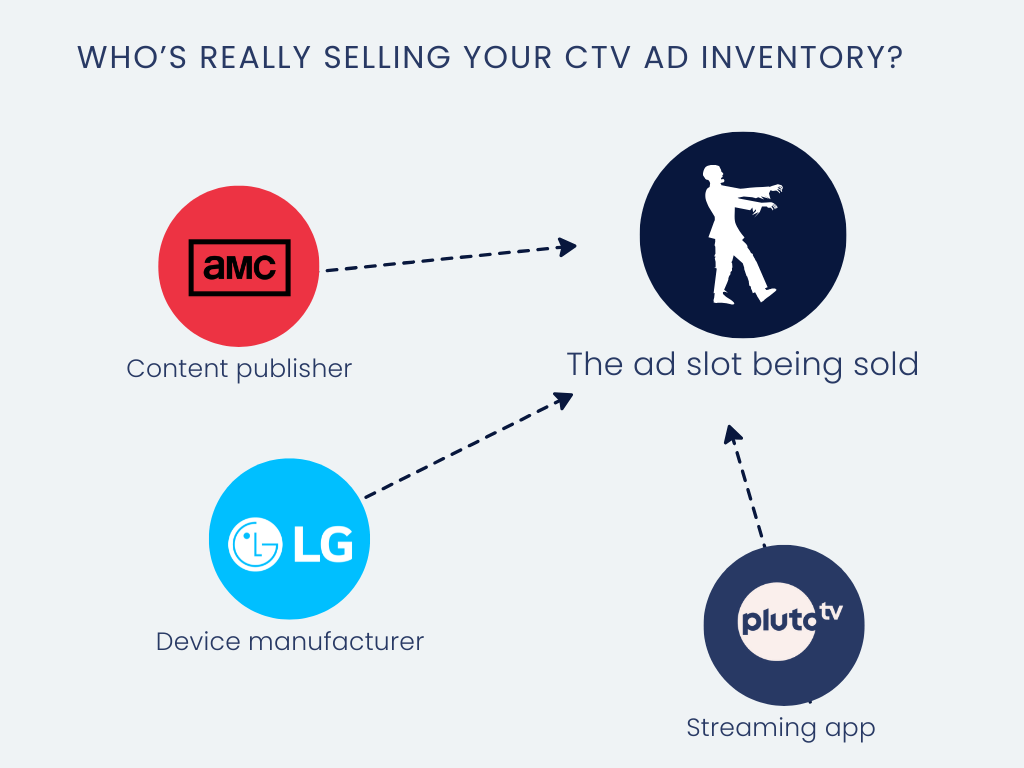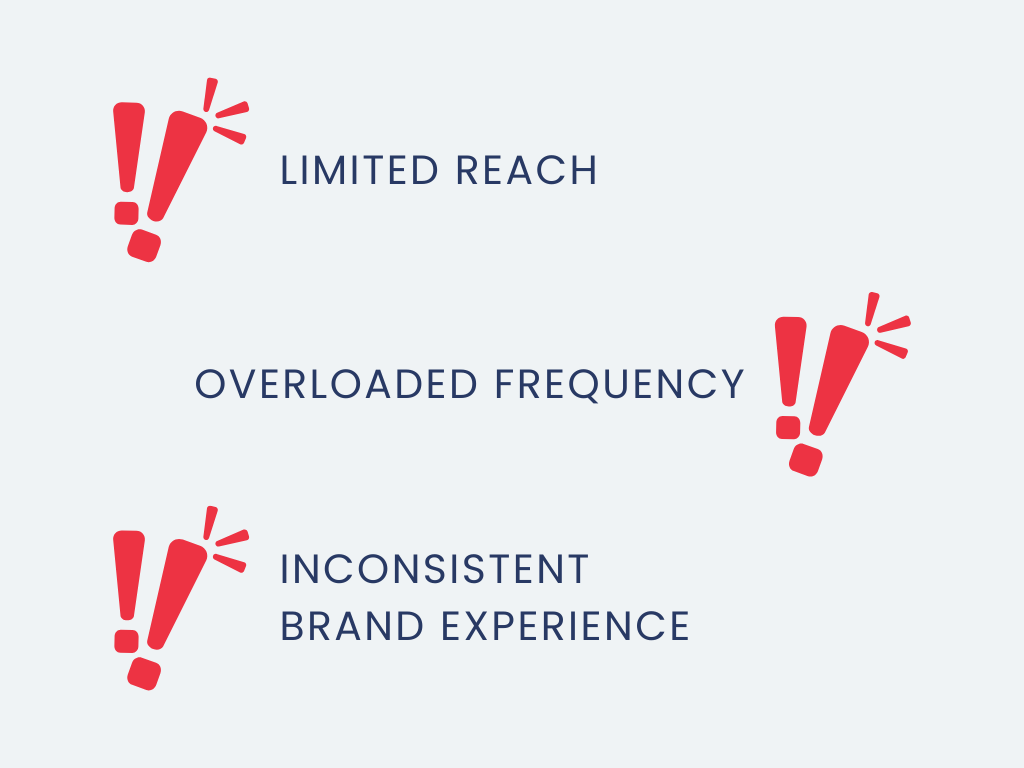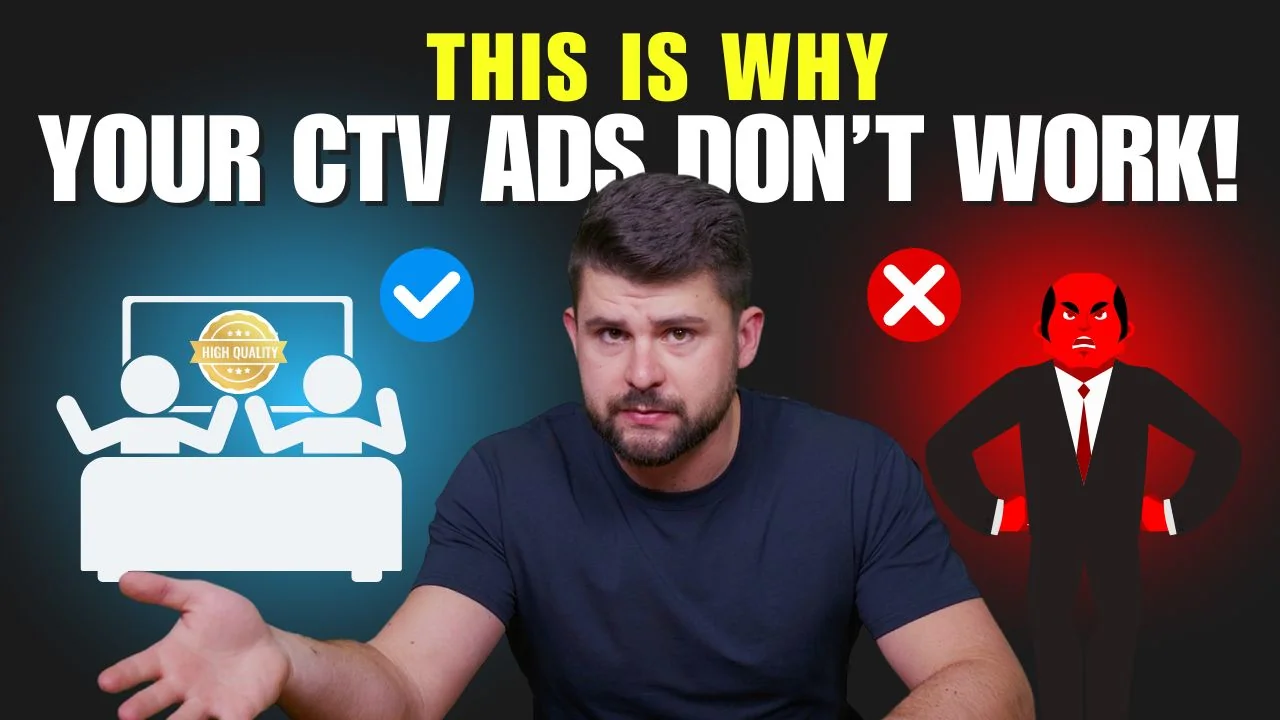Think You Know Where Your Ads Are Running? Think Again.
Buying CTV ads seems simple:
- Pick a streaming app
- Run your ads
- Watch the impressions roll in
If only it were that easy.
Behind the scenes, there’s a tangled mess of content publishers, platforms, and device manufacturers, all of them selling the same ad slots in different ways. If you don’t understand the breakdown, you might be paying for low-value placements without even realizing it.
Let’s clear up the confusion.
Who’s Really Selling Your CTV Ad Inventory?
Let’s say you’re watching The Walking Dead reruns on Pluto TV using an LG Smart TV. You see an ad. Simple, right?
Not so fast.
That ad slot could have been sold by:
1️⃣ Pluto TV – the streaming app itself
2️⃣ AMC – the content publisher that owns The Walking Dead
3️⃣ LG – the device manufacturer, which sells its own ad inventory

For example, even though it looks like your ad ran on Pluto, it might have only been available within AMC content on Pluto, not across the entire platform. This means your ad’s reach is limited to specific content rather than the full Pluto audience.
Why This Matters for Advertisers

If you don’t know exactly who is selling your inventory, your campaign can suffer:
🚨 Limited Reach – Your ads might only show up on specific content instead of across the platform.
🚨 Overloaded Frequency – If your inventory is limited, your ads might spam the same viewers instead of reaching new ones.
🚨 Inconsistent Brand Experience – You want your campaign to deliver a seamless experience, not be scattered across random, unrelated content.
And yet, many CTV providers don’t disclose this in their reporting. Instead, they list a mix of streaming apps and hope you don’t ask where the inventory actually came from.
How CTV Providers Cut Corners
Why would a CTV provider only buy from one source instead of accessing all available inventory?
📌 Profit Margins.
📌 Convenience.
📌 Because they assume you won’t ask.
Some providers simply chase the cheapest deal each month, buying bulk inventory from one content publisher instead of ensuring your ads reach the best possible audience. If they can still show a variety of streaming apps on your report, they figure you won’t question it.
But now you know better.
How to Tell If Your Provider Is Doing It Right
Not sure if your provider is managing this the right way? Ask them:
✔️ Can you report impressions by app AND by content publisher separately?
✔️ For a given platform (like Pluto TV), which publishers did you source inventory from?
If they can’t—or won’t—answer, it’s time to work with a team that actually knows what they’re doing.
At adduro.io, we don’t just run ads. We build smarter, better CTV campaigns that deliver real results—without the guesswork.
🚀 Want to work with experts who actually optimize your inventory? Let’s talk!



